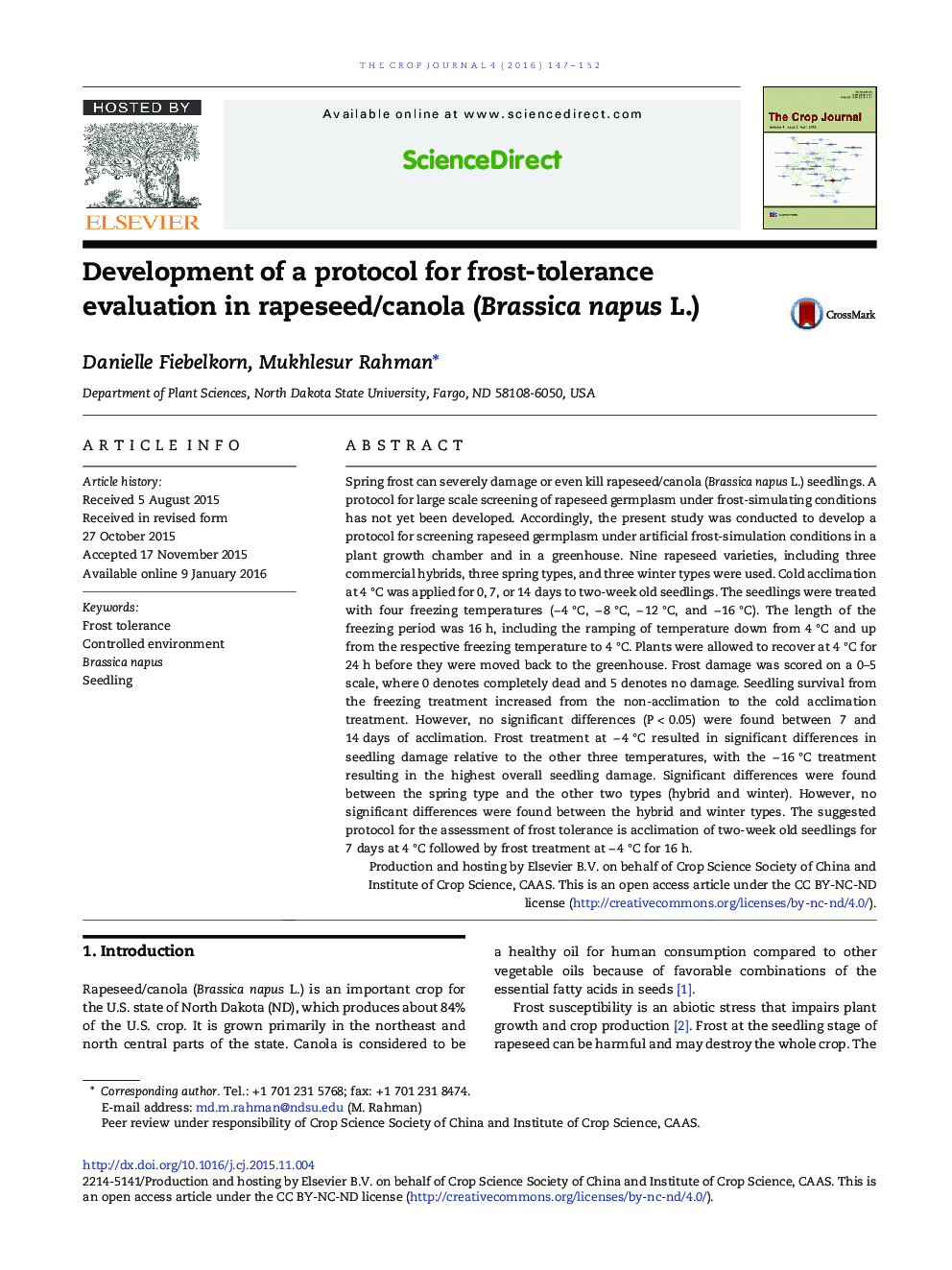| Article ID | Journal | Published Year | Pages | File Type |
|---|---|---|---|---|
| 2079431 | The Crop Journal | 2016 | 6 Pages |
Spring frost can severely damage or even kill rapeseed/canola (Brassica napus L.) seedlings. A protocol for large scale screening of rapeseed germplasm under frost-simulating conditions has not yet been developed. Accordingly, the present study was conducted to develop a protocol for screening rapeseed germplasm under artificial frost-simulation conditions in a plant growth chamber and in a greenhouse. Nine rapeseed varieties, including three commercial hybrids, three spring types, and three winter types were used. Cold acclimation at 4 °C was applied for 0, 7, or 14 days to two-week old seedlings. The seedlings were treated with four freezing temperatures (− 4 °C, − 8 °C, − 12 °C, and − 16 °C). The length of the freezing period was 16 h, including the ramping of temperature down from 4 °C and up from the respective freezing temperature to 4 °C. Plants were allowed to recover at 4 °C for 24 h before they were moved back to the greenhouse. Frost damage was scored on a 0–5 scale, where 0 denotes completely dead and 5 denotes no damage. Seedling survival from the freezing treatment increased from the non-acclimation to the cold acclimation treatment. However, no significant differences (P < 0.05) were found between 7 and 14 days of acclimation. Frost treatment at − 4 °C resulted in significant differences in seedling damage relative to the other three temperatures, with the − 16 °C treatment resulting in the highest overall seedling damage. Significant differences were found between the spring type and the other two types (hybrid and winter). However, no significant differences were found between the hybrid and winter types. The suggested protocol for the assessment of frost tolerance is acclimation of two-week old seedlings for 7 days at 4 °C followed by frost treatment at − 4 °C for 16 h.
